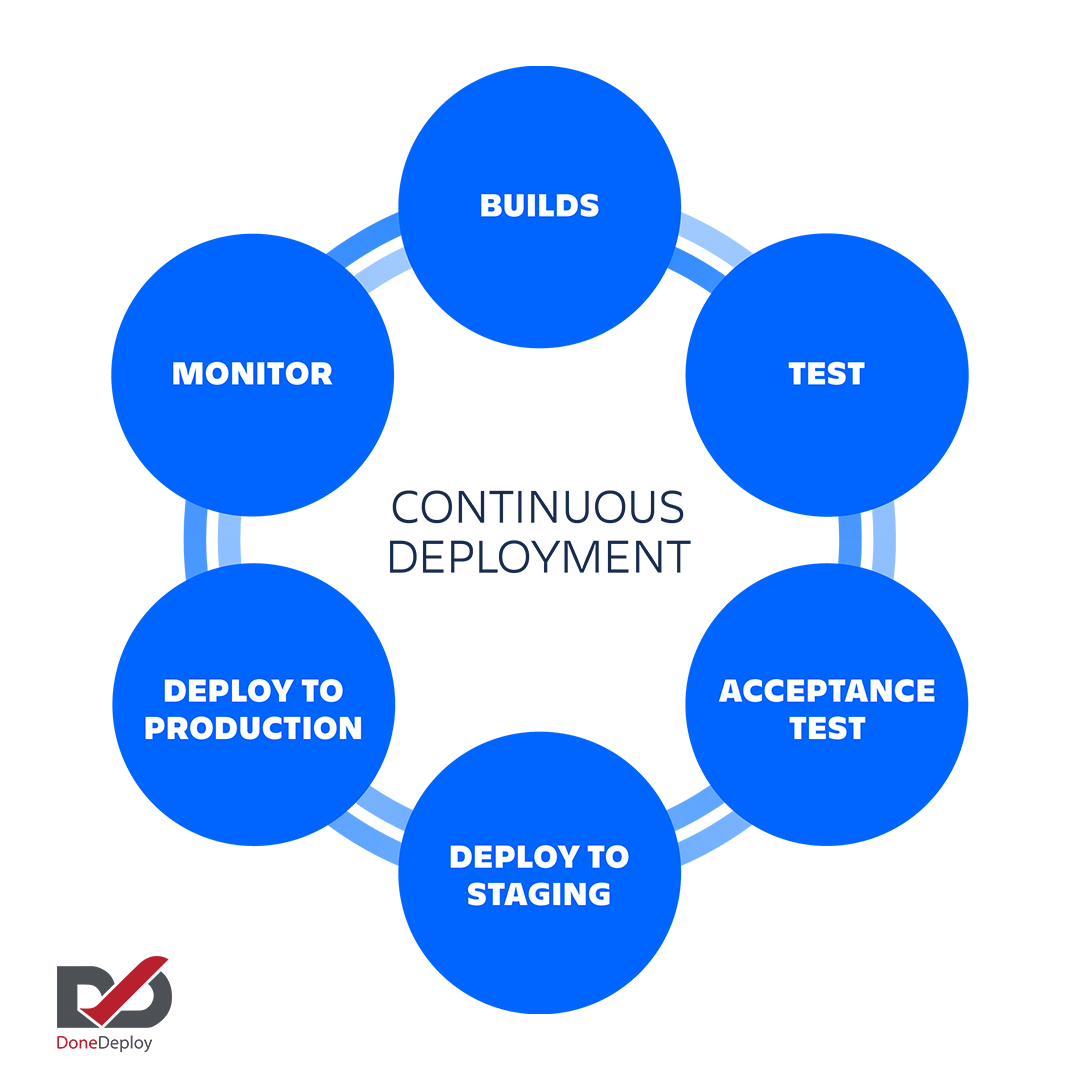
Understanding Continuous Deployment
Continuous Deployment (CD) is a critical DevOps practice that automates the release process, deploying every change that passes automated tests directly to production. This approach reduces the time between writing code and making it live, enabling faster feedback loops and frequent releases. By automating manual steps, CD minimizes human error and ensures consistent deployments, delivering a steady flow of value to end-users.
What Is Continuous Deployment?
Continuous Deployment automates the process of moving code changes to production after they pass all stages of automated testing. This practice is an extension of Continuous Integration (CI) and Continuous Delivery (CD), where the final step—deploying to production—is automated. The goal is to have software that is always in a deployable state, allowing for rapid and reliable release cycles.
Benefits Of Continuous Deployment
- Faster Feedback Loops
- Continuous Deployment allows for immediate feedback from the live environment. Developers can quickly see the impact of their changes and make necessary adjustments, leading to a more efficient development process.
- Reduced Human Error
- By automating the deployment process, CD eliminates many manual steps that are prone to human error. This results in more reliable and consistent deployments.
- Frequent Releases
- With Continuous Deployment, new features and updates are released as soon as they are ready, providing a steady flow of improvements and value to end-users. This keeps the software current and competitive.
- Improved User Experience
- Frequent and reliable updates lead to a better user experience. Users benefit from new features and bug fixes without long waits, increasing satisfaction and engagement.
- Enhanced Collaboration
- CD fosters a collaborative environment where developers, testers, and operations teams work closely together. This enhances communication and efficiency, allowing teams to focus on strategic and creative tasks.
Core Elements Of Continuous Deployment
- Automation
- Automation is at the heart of Continuous Deployment. From testing to deployment, every step is automated to ensure speed and reliability.
- Continuous Feedback
- CD provides continuous feedback from the live environment, allowing teams to monitor performance and user behavior in real-time. This feedback is crucial for making quick adjustments and improvements.
- Consistency
- Automated deployments ensure that each release is consistent and repeatable. This reduces the risk of deployment failures and ensures that the application behaves as expected in production.
How DoneDeploy Enhances Your Deployment Process
At DoneDeploy, we leverage the power of Continuous Deployment to enhance your software delivery process. Our approach ensures that your deployments are fast, reliable, and consistent, enabling your team to focus on innovation and strategic development.
Share this article
Follow us
A quick overview of the topics covered in this article.
Latest articles
December 31, 2025
December 31, 2025
December 31, 2025







